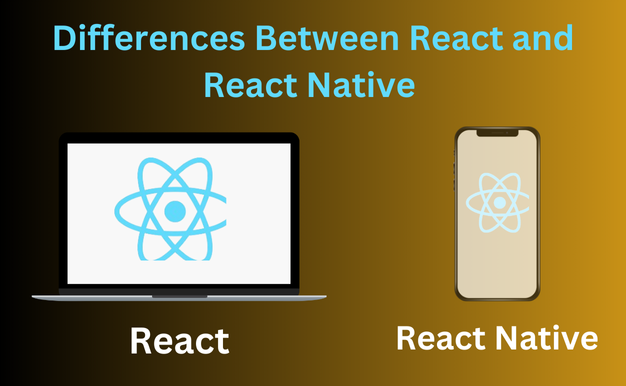July 16, 2024
Author: admin
iPhone vs Android: Top 10 things iPhones Can Do That Android Phones Can’t

By admin Posted on July 16, 2024
Overview
Choosing a smartphone can feel like a daunting task. In today’s tech-driven world, both iPhone vs Android devices offer a plethora of features and functionalities. But for some users, the battle boils down to Apple’s iPhones versus the vast array of Android phones. While both platforms excel in their own ways, iPhones boast some unique capabilities that might sway your decision.
Let’s delve into 10 areas where iPhones shine and explore where to find the perfect hire Android developer or IOS Software Developer to bring your mobile vision to life, be it iOS or Android.
1. Seamless Ecosystem: iMessage, FaceTime, and Handoff
iPhones integrate beautifully with other Apple devices like iPads and Macs. Imagine seamlessly starting a text message (iMessage) on your iPhone and continuing the conversation on your Macbook. Or, picture having a face-to-face video call with a friend or colleague using FaceTime, available exclusively on Apple devices. This interconnected ecosystem, further enhanced by features like Handoff (which allows you to effortlessly transfer tasks between devices), creates a smooth and unified user experience.
2. Unmatched App Security: App Store’s Stringent Review Process
Security is paramount in today’s digital landscape. Apple’s App Store enforces a rigorous review process for all apps before they become available for download. This stringent approach helps minimize the risk of encountering malicious software or privacy-invasive apps. While the Google Play Store (Android’s app marketplace) has made strides in security, Apple’s curated App Store offers an added layer of peace of mind for iPhone users.
3. Timely Software Updates: Consistent Performance and Security
One of the biggest advantages of iPhones is the consistent and timely software updates provided by Apple. These updates not only introduce new features and functionalities but also address security vulnerabilities. This ensures that your iPhone remains protected and performs optimally throughout its lifespan. While some Android manufacturers offer update support, it can often be fragmented and inconsistent across different devices.
4. iMessage and FaceTime Features: Richer Communication
iMessage goes beyond basic texting, offering features like sending photos and videos in high quality, fun animations (Memojis and Animojis), and the ability to react to messages with bubbles. Similarly, FaceTime allows for group video calls and features like Screen Share, making communication with loved ones or colleagues more engaging and interactive. These features are exclusive to Apple devices and contribute to a richer communication experience.
5. Integration with Apple Watch: Enhanced Functionality on Your Wrist
The Apple Watch seamlessly integrates with iPhones, extending functionalities to your wrist. Imagine receiving notifications, making calls, replying to messages, or even monitoring your fitness directly from your Apple Watch. This level of integration between phone and smartwatch is unique to the Apple ecosystem and offers a convenient way to stay connected and on top of your day.
6. User-Friendly Interface: Simplicity and Intuitive Design
iPhones are renowned for their user-friendly interface. Apple prioritizes a clean and intuitive design philosophy, making it easy for anyone to navigate the phone’s features. Whether you’re a tech-savvy user or someone new to smartphones, iPhones offer a smooth learning curve thanks to their straightforward design.
7. Strong Resale Value: iPhones Hold Their Worth
If you plan on upgrading your phone in the future, iPhones are known for holding their resale value significantly better than most Android devices. This is due to a combination of factors, including Apple’s brand recognition, consistent software updates, and overall build quality. So, if you’re looking for a phone that retains its value over time, iPhones might be a wise investment.
8. Exclusive Apps: Early Access and High-Quality Experiences
Certain high-profile apps or games might be released first on the App Store, giving iPhone users early access to these experiences. Additionally, some app developers dedicate more resources to creating optimized and visually stunning versions for iPhones, leveraging the device’s hardware capabilities.
9. Focus on Privacy: Strong User Data Protection
Apple prioritizes user data protection and offers various features to control how your information is collected and used. From giving you clear explanations about app permissions to offering options to limit ad tracking, iPhones empower you to make informed decisions about your privacy.
10. Regular Security Patches: Addressing Vulnerabilities Promptly
Apple is diligent about releasing security patches to address potential vulnerabilities in its software. This proactive approach helps keep iPhones safe from emerging threats and ensures a more secure mobile experience.
How To Find the Perfect App Developer?
Whether you’re an entrepreneur with a groundbreaking app idea or a business seeking a custom mobile solution, choosing the right developer is crucial.If you’ve decided that an iPhone app best suits your needs, here are some additional tips for finding the perfect software developer:
- Focus on Apple’s Development Tools and Technologies: Ensure the developer has expertise in using Apple’s development tools (like Xcode) and programming languages (like Swift). These tools and languages are specifically designed for building iOS apps and allow developers to take full advantage of the iPhone’s capabilities. Imagine using the right tools for the job – hire iPhone app developers who are well-versed in Apple’s ecosystem can create a more optimized and native-feeling app.
- Understanding the iOS Design Language: Apple has a distinct design language (user interface guidelines) that ensures a consistent and familiar experience for iPhone users. Choose a developer who understands these guidelines and can create an app that feels seamlessly integrated into the iOS ecosystem. Imagine building a house that adheres to the neighborhood’s architectural style – an app developer who understands Apple’s design language can create an app that feels right at home on iPhones.
Conclusion:
Whether you choose to build an iPhone app or an Android app, partnering with a skilled developer is essential for the success of your mobile project. By carefully considering the strengths of each platform, your target audience, and the developer’s expertise, you can bring your mobile vision to life and create a valuable experience for your users.
Also Read-: Cloudflare vs. AWS CloudFront




